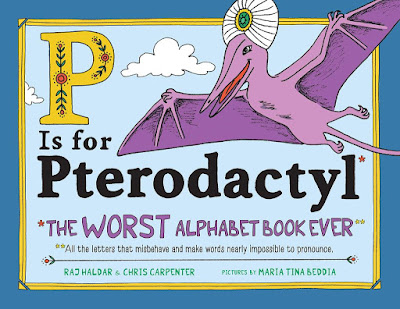Is the 'Worst Alphabet Book Ever' the best alphabet book ever?
The new best-selling book ‘P Is for
Pterodactyl: The Worst Alphabet Book Ever’ written by Raj Haldar and Chris
Carpenter with illustrations by Maria Beddia became everyone’s favourite upon release. The first
batch of copies was entirely sold out but the hype is still at its peak. What
was striking for the public about this random children’s book is its approach
in teaching the language to little minds. Instead of the easy, short options,
the book comes up with complicated or perhaps unusual words for the 26
letters.
 |
| Front page source |
Chris Carpenter explains in an interview with Bored Panda that the hilarious
idea stemmed from a gathering between him and Haldar alongside their
other friends and their child. Haldar says that as soon as their friend picked up
a flashcard that said ‘Q is for Quinoa’, the two friends were instantly
captivated by the ridiculousness and funniness of teaching children random words in the early stages of their cognitive
experience. An online space was shared between the writers as they randomly
threw in weirder words along the way. Although this published work carries a simplistic
vibe, it is a clear indication that one can not only write but also go so far as to publish a book about literally anything. Who would’ve thought an alphabet book
can pays someone’s rent?
“Neither of us are children’s book authors by trade — Chris is a computer programmer, and I’m a rapper otherwise known as Lushlife”
 |
| photo source |
The book, which
took about 3 years to make, made a statement about the complexity of language learning.
Maybe it’s not an overestimation for children in kindergarten to be exposed to
words like ‘Czar’, ‘Tsunami’ and ‘Knight’ instead of ‘Cat’, ‘Tree’ and ‘Kite’. The
‘worst alphabet book ever’ is a lighthearted reminder from a rapper and a
programmer that the English language may be beautiful and simple, but it can
also be very odd.

Comments
Post a Comment